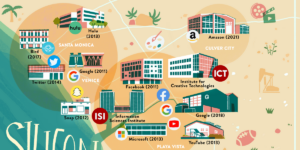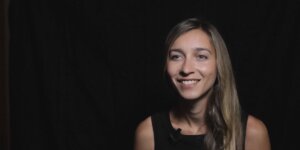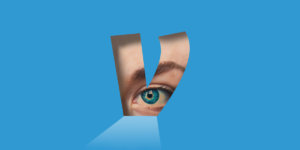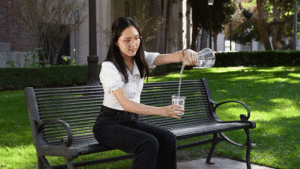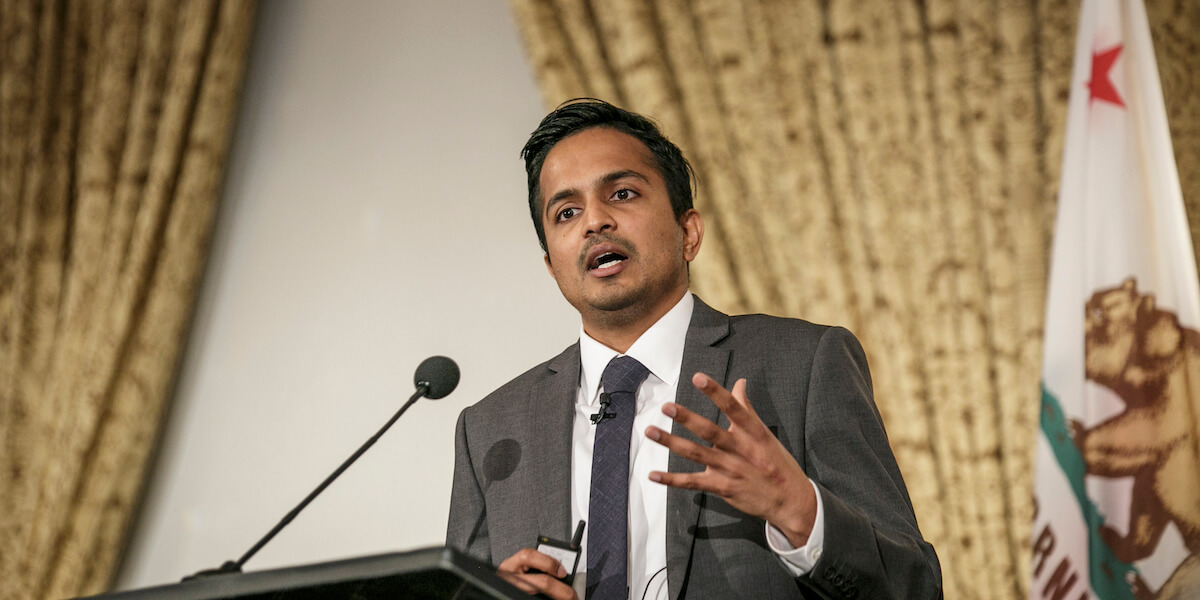
Karthik Murali, Director of USC Digital Health Law, speaks at the 2018 USC Summit: Ending Homelessness in Los Angeles April 20, 2018. Photo by David Sprague
When a police officer finds a homeless person in need of help, bureaucracy often obscures practical aid. Does the officer walk up to the homeless individual with a bulky stack of paperwork containing their past records? Do they call the individual’s case manager, who may or may not pick up? Does the officer wait to report the interaction at a meeting later in the week? None of the options are ideal – or particularly efficient.
“It was all very analog,” said Karthik Murali, the director of USC’s Digital Health Lab, an innovation lab focused on enabling digital problem-solving for public health and medicine. “You have delayed information sharing. You can’t make decisions at the field in front of the person you’re interacting with.”
A new app could change that.
The app, currently in development in Murali’s D-Health lab, in conjunction with the city of Santa Monica and the Milken Institute, an economic think tank, will enable instantaneous information sharing among the multiple agencies involved with homeless populations in local communities.
Rather than placing a phone call or fumbling through papers, the app will let governmental workers immediately see all available information about the homeless person they’re interacting with. Additionally, if a police officer wants to contact a case manager, they can leave a note on the app.
With the app, care will become more immediate, synchronized and personalized for those in the homeless community who need it most. It will also allow government workers to perform their jobs with increasing accuracy.
“You have all of the information that you need to make a decision and you can do this wherever you are,” Murali said. “It’s on your phone.”
The app will be tested in the field soon, starting in the city of Santa Monica. To end persistent cycles of homelessness, the app will initially be used exclusively for Santa Monica’s one hundred “highest utilizers,” the chronically homeless who often have mental health conditions and repeated interactions with police officers and firefighters.
Murali is careful not to move too quickly.
“This is not a simple app,” Murali said. “If you’re building an app just for me to text someone else, you can build it, throw it out there and you can use it. Here, we’re talking about very vulnerable people. The last thing you want to do is share information that’s not okay.”
The team is currently working with lawyers at the city attorney’s office to establish a clear set of rules as to what information can be shared and with whom.
Once the app is carefully rolled out, it could be used elsewhere; the city of Long Beach is talking with D-Health about implementing a similar program there as well. Murali also anticipates that it could extend to the city of Los Angeles, which has a high homeless population due to Skid Row. “Success builds upon success,” Murali said.
Success has followed the D-Health lab as well. D-Health was first conceived as an initiative of Health, Technology and Engineering at USC, known as HTE@USC, a uniquely collaborative joint program from which Murali is a fellowship alumni.
Launched in 2011, HTE@USC brings together medical students and Ph.D. engineering students to devise creative solutions to the biggest problems facing the world of healthcare. Each year, 30 students join the four-year program, at the end of which they obtain a certificate – and invaluable connections with fellow students. Businesses formed with classmates while in the program are ideally up and running by graduation.
“There are no other programs at USC where medical students and engineering students are in class together,” Nadine Afari, the project manager at HTE@USC, said.
As an alumus of the program, Murali was already familiar with the benefits of collaboration. When the USC Provost’s Office launched its Eliminating Homelessness Initiative in 2016, Murali and his team wanted to find a way for D-Health to become part of the solution as well.
Murali noticed that a lot of the issues the lab had seen while working in hospitals were also present in public health systems, like Los Angeles County’s Department of Health Services and the city of Long Beach’s Department of Health and Human Services.
Once D-Health made the leap into tackling homelessness, partnerships with the Milken Institute and the city of Santa Monica followed. It was at the Milken Institute’s California Summit in 2017 that the three groups realized they were all working on homelessness – separately.
“That’s when everything clicked,” Murali said. “A few conversations down the road, we all sat in the same room [again] and we said, ‘You have this problem; I think we have a solution that can help.’”
Together, the three groups conducted intensive interviews, group meetings, and ride-alongs so that their prospective app would directly address the problems of the people who needed it. Now, the completed app is a testament to the benefits of collaboration when formulating technological solutions to longstanding problems.
“Technology is not the solution. Technology is just part of the answer,” Murali said. “You talk to the person having the problem and figure out what the actual problem is. Then you build something that they will actually use. [That’s] how you’re supposed to do it.”
Published on November 7th, 2018
Last updated on July 10th, 2023




